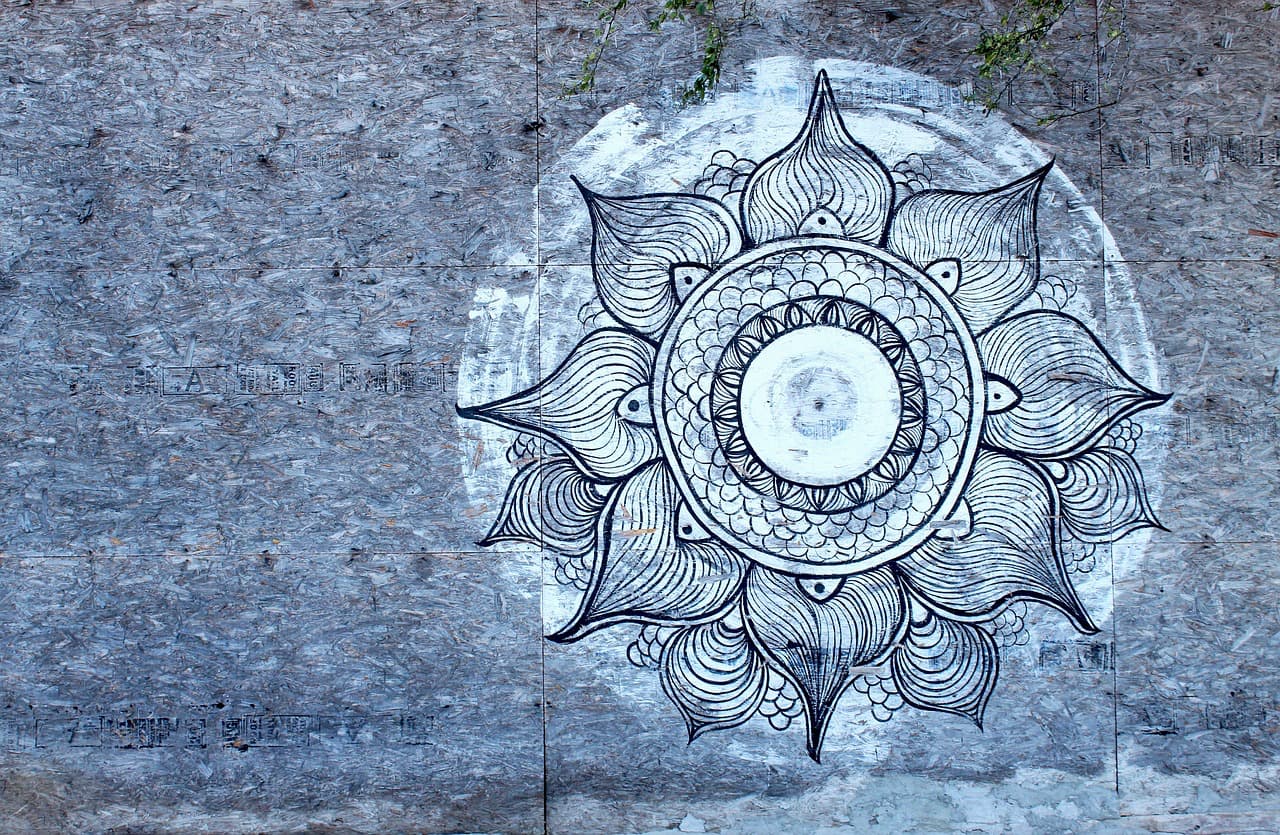🕑 5 min di lettura
Mandalas are geometric designs that radiate from a central point, forming a harmonious and balanced structure. The word mandala comes from Sanskrit and means “circle.” Originally found in the ancient texts of the Vedas, mandalas symbolized a cyclical and eternal process—the beginning and the end of a journey. In the Vedic texts, some sections were called “Mandala” because of their circular nature.
In many cultures and spiritual traditions, mandalas have been used as sacred tools. In both Hinduism and Buddhism, they represent the cosmos, offering a path for meditation, concentration, and personal transformation. Mandalas typically feature a central circle with four gates or access points on each side, symbolizing the four cardinal directions and energetic balance.
A well-known example is the intricate mandalas created by Tibetan monks. These large, detailed works of art are carefully constructed and then destroyed, symbolizing the impermanence of life. This process reminds us that, while life is fleeting, the act of creation holds profound spiritual value.
Uses of Mandalas
Mandalas are used for various purposes:
Concentration and focus: their intricate designs help center the mind.
Spiritual teaching: mandalas represent spiritual concepts, guiding practitioners toward enlightenment.
Creating a sacred space: they transform an ordinary space into one filled with spiritual energy.
Support for meditation: a mandala can serve as a visual focal point to deepen meditation.
Inducing trance states: some practitioners use mandalas to enter altered states of consciousness.
Protection: in certain traditions, wearing or displaying a mandala over the heart chakra is considered a remedy to protect oneself from negative influences.
Mandalas and Psychology
Psychologists have also explored the therapeutic benefits of mandalas. David Fontana, a renowned psychologist, suggested that mandalas can be a powerful tool for accessing deeper levels of the unconscious mind. Carl Jung, the famous disciple of Freud, extensively used mandalas both for himself and for his patients. He discovered that creating or meditating on a mandala often provided insights into emotional states and psychological imbalances, serving as a mirror of the unconscious.
Mandalas: Microcosm and Macrocosm
Mandalas are often seen as representations of the universe. They symbolize the macrocosm—the vastness of the cosmos—and the microcosm—the individual human being. In many spiritual traditions, mandalas are tools for reflecting on the interconnectedness of all things.
Kolam: A Daily Practice
In South India, a specific type of mandala known as Kolam is created every day at the entrance of homes. These intricate designs, made with rice flour or powdered stone, are considered to carry positive energy and blessings. The daily creation of a Kolam promotes mindfulness, inviting harmony and peace into the home.
Yantra: Sacred Geometric Tools
Alongside mandalas, there are Yantras, another form of sacred geometry in Indian spiritual practices. The word Yantra means “machine” or “instrument,” but it is not just any machine—it is a powerful tool for meditation and spiritual growth. The human body itself is often considered a Yantra, as it is believed to have the ability to perform spiritual practices and meditation that can lead to higher states of consciousness.
Yantras often consist of a central geometric shape, typically a circle with four gates, similar to mandalas. A prominent example is the Sri Yantra, which visually represents the sound Om. The Sri Yantra is made up of interlocking triangles forming a sacred pattern, symbolizing the interaction between the divine feminine (Shakti) and the divine masculine (Shiva). The design features two opposing triangles: one pointing upward, representing self-realization, and the other pointing downward, symbolizing service to the world. The balance of these two forces is believed to lead to spiritual enlightenment and success.
The Meaning of the Swastika
One of the most important symbols associated with both yantras and mandalas is the swastika. Far from being a negative symbol, as it was mistakenly associated in the 20th century, the swastika is actually one of the oldest and most auspicious symbols in the world. In Hinduism and many other cultures, it represents spiritual power and well-being. The swastika consists of two intersecting lines: a horizontal line, representing Shiva, the universal consciousness, and a vertical line, representing Shakti, the dynamic energy of creation. The four arms of the swastika represent the movement of the Kundalini energy, which uncoils like lightning, leading to enlightenment.
The Power of Sacred Geometry
Both mandalas and yantras are forms of sacred geometry—structures that carry intrinsic spiritual power. These geometric patterns are not merely decorative; they serve as maps for understanding the universe and the individual. By meditating on these symbols, practitioners believe they can align their inner energy with the greater forces of the cosmos.
My Personal Journey and Gratitude
This article is based on what I learned during my 200-hour yoga teacher training course at the Himalayan Yoga Institute. I am deeply grateful to my teacher, Ganga Devi, for sharing her knowledge and wisdom with me. I am honored to be able to share the insights I gained during my journey and yoga practice in Tropea and Zambrone, Calabria, in southern Italy. May these teachings bring to you the same peace and understanding that they have brought to me.


